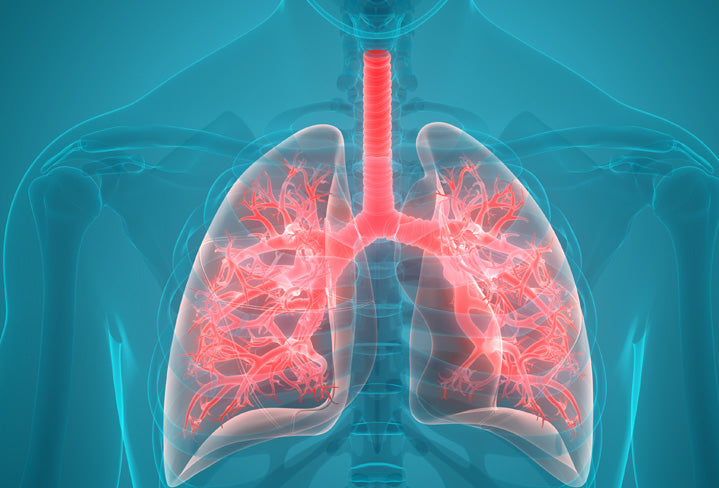
Before the current pandemic the common man had hardly come across medical terminologies such as SpO2 level, RT-PCR (Reverse Transcription - Polymerase Chain Reaction) test, Antigen test, Antibody test, pulse rate etc. The pandemic crisis has forced people to understand these terms, especially more in this second wave in which the virus appears to be in its deadliest strength with multiple new symptoms, and in different variants that were not observed in the first wave.
One main symptom which remains common in both the waves and is of utmost importance i.e. shortness of breath due to fall in SpO2 level.
SpO2 i.e. oxygen saturation, indicates the amount of oxygen-carrying haemoglobin (a blood component) in the blood relative to the amount of haemoglobin not carrying oxygen.
The most common target body part of this virus is our respiratory system. Initially, the virus attacks the upper respiratory tract ( first part) which later on if not checked, aggravates and spreads into both the lungs and finally the virus can damage the alveoli (tiny air sacs). When the condition persists or aggravates the COVID-19 patient suffers with acute respiratory distress syndrome (ARDS) which could further leads to pneumonia.
It is observed that in current time people are actively monitoring their SpO2 level with the help of pulse-oximeter (an electronic device) and get fearful if their SpO2 level is below 94.
Butterfly Ayurveda intends to brief and educate the common man about the function of lungs, the blood oxygen level, and how to maintain the optimum health condition of lungs, and how to achieve an optimum blood oxygen level.
LUNGS
Lungs are the main respiratory organ of human beings which are situated in the chest on either side of the heart. During respiration we take fresh air (inhale) into our body and remove (exhale) waste gases (i.e. CO2) from our body through nostrils. The main function of the lungs is to transport oxygen from the atmospheric air into the bloodstream and to release carbon dioxide from the bloodstream into the atmosphere, since every cell in our body needs oxygen in order to live. Our lungs and respiratory system automatically performs this vital process of oxygen availability and removal of carbon dioxide in the body which could be called gaseous exchange.
BLOOD OXYGEN LEVEL
Blood oxygen level is the amount of oxygen circulating in the blood. A person’s blood oxygen level is an indicator of how well the body distributes oxygen from the lungs to the cells, and it is very important for people’s health. The biological system closely monitors blood oxygen levels within a specific range, so that there is enough oxygen as per the needs of the body.
Normal and low blood oxygen levels
In daily life one can easily monitor the blood oxygen level at home with the help of pulse-oximeter (an electronic device) which is easily available in the market and quite simple to handle. It measures oxygen level when the middle finger is placed in it for at least 30 seconds.
Normal range of Blood Oxygen Level as measured by Pulse-oximeter is 95 to 99 mmHg. Blood oxygen level below 88mmHg (on Pulse-oximeter) is a critical condition, this condition is called Hypoxemia. In this condition there is inability of the lungs to inhale and send oxygen to all body cells, tissues and organs and not cater to their needs.
Symptoms of low blood oxygen level
There are many common symptoms by which the low oxygen level could be understood such as :
- Feeling severe shortness of breath during exercise & physical activity.
- Waking suddenly with shortness of breath and a feeling of choking.
In the critical low oxygen condition the symptoms could be dizziness, restlessness, increased heart beat, chest pain and headache even syncope (temporary state of unconsciousness due to low blood pressure etc).
How to maintain an optimum blood oxygen level
With self efforts and care we can achieve the optimum blood oxygen level and reduce the symptoms of shortness of breath and resume our general health. By following small tips we can improve our quality of life especially in this critical situation.
1. Breathing Exercise: Breathing exercise improves the lung capacity and increases the oxygen uptake from the atmosphere. Nadi shodhan pranayam (alternate nostril breathing) is an effective and simple yogic practice, which can be performed easily by a common man. Certain other Yogic exercises such as Shashank aasan, Ardha halasana are also helpful for lungs.
2. Walking: It has been scientifically proven that 30 minutes brisk walking definitely increases the lung capacity and utilizes atmospheric oxygen in a better way.
3. Diet: Seasonal and fresh fruits and vegetables are rich in antioxidants and are good and helpful for boosting the availability of oxygen to the body. Antioxidants allow the body to use oxygen more efficiently by increasing the oxygen intake.
4. Hydrate the body: Human body is made up of 60% of water and it performs so many functions in our body. It regulates the body temperature through sweating & respiration. It helps in delivery of oxygen all over the body. So it is advised to drink sufficient amounts of water. For male about 3.2 Litre is recommended and for females it is about 2.2 Litres.
5. Breath in clean air: Poor air quality has a bad impact on our blood oxygen level. We can use an air purifier in our home and office to improve air quality and create a better atmosphere for healthy breathing. Pure Beeswax candles are also a source of air purification as they do not produce smoke, and instead produce negative ions which help in air purification.
6. Prone position: It is a known fact that the physical position of the body affects the distribution and volume of air in the lungs, and it can have a direct impact on the expansion or collapse of the delicate alveoli i.e. air sacs that permit the exchange of oxygen and carbon dioxide in the blood. Studies have shown that supine position i.e. lying on the back can be detrimental to good pulmonary function. However, lying belly down or lying on stomach with two pillows below chest and hip region each followed by lateral (side) lying for some more increases the blood oxygen volume which could be. In the current pandemic it is even being practiced in hospitalized and ventilated patients also.
7. Ballooning: Blowing a balloon for five minutes is also a very good exercise for the lung function which in turn improves the blood oxygen level.
8. Others: Certain Ayurvedic medicines such as Dhatri lauh, Swas kas chintamani are also found effective in severe respiratory distress conditions. Medicinal inhalers such as those made from camphor and clove oils also clear the nasal passage and play a supportive role.
Read our other blogs to know more about how ayurveda can help with the current crisis of Covid-19 and other lifestyle related disorders.

Comments (0)
Back to News